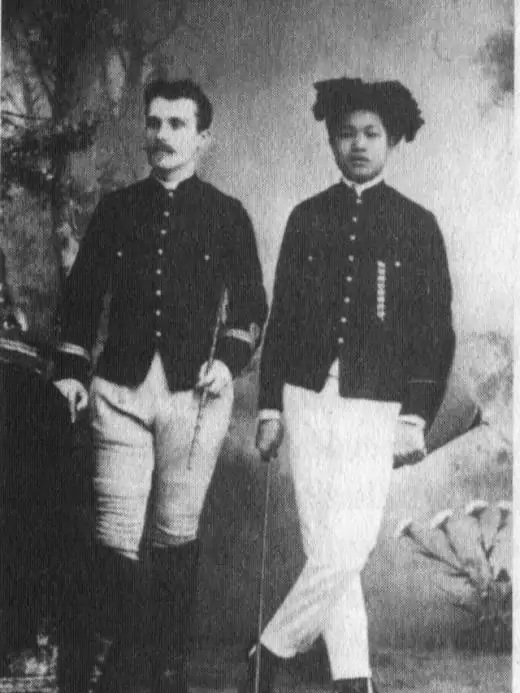
Albert Cézard (France, 1869-circa 1916) in his atelier in Hanoi.
Albert Cézard and his friend Albert de Pouvourville, a French orientalist, mystic, author, poet, and translator, had a shared soft spot for Indochina, not that Indochina of the splendour of colonisation but the Indochina of the heart, that of emotions.

Albert de Pouvourville, a French orientalist, mystic, author, poet, and translator
Albert Cézard is an artist, both a painter and an outstanding draftsman. The study of his life sends us back more than 150 years. He was born in 1869 in Nantes into a family that included "long-term ship-owners and powerful interests in the Dutch East Indies" (current Indonesia). During his childhood, he was interested in photography and lithography more than for the sake of studies. Enthusiastic about liberty and adventure, he joined the marine infantry and became a part of Tonkin. There, he served as a soldier in the military for three years but was attracted by the country's beauty compared to the armed forces. Asking for a leave, he worked as a typographer at the famous Schneider printing works in Hanoi. A few months later, he embarked on a caricature by publishing a weekly sheet, "La vie Indochinoise," which sketched in drawing all those who mattered in the colony.
After seven years, he returned to France (around 1900?) and decided to take courses to master the techniques of the fine arts. He dazzled visitors to the 1903 Colonial Painters Exhibition with “30 magnificent drawings” in Indian ink enhanced with gouache. These drawings illustrate Pouvourville's poetry work "Rimes Chinoises". On the strength of this success, he obtained what he wanted: an artistic mission in Indochina. So he left with a light heart, taking advantage of this trip to discover the Canton River in China.
He took the time to publish two humorous albums in Hanoi, then returned to France with abundant documentation that would allow him to produce many drawings and paintings in the following years. He exhibited at the colonial exhibition in Marseille in 1906 and Bordeaux the following year. It illustrates a special issue of the Dépêche Coloniale Illustrée dated January 31, 1908, on "Art in the French Far East" (available on Gallica) and from which the biographical elements above are taken. He also depicted several colonial novels.
He founded with other successful authors, such as Pierre Mille, A. Drouin, Maybon, Claude Farrère and his lifelong friend Pouvourville, the group "of the French of Asia", whose objectives were to make people love Indochina in metropolitan France. All inhabited. The other objective was to repel "any contraband exoticism" among authors who would be tempted by the easy way. Another notable issue on July 31, 1909, appeared to this effect, still in the Illustrated Colonial Dispatch. We can see a few more illustrations in the same magazine in December 1911.










